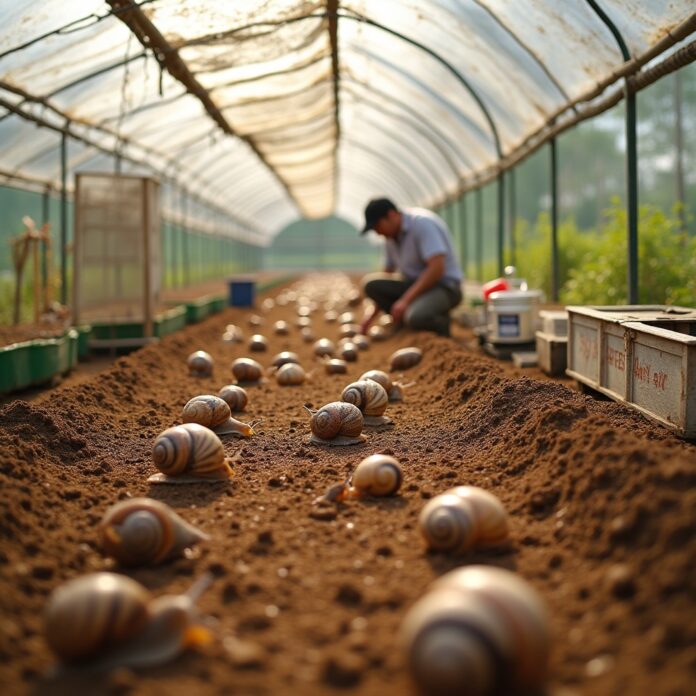Snail farming, or heliciculture, is a low-cost, high-reward venture with growing global demand. This guide provides actionable steps to master soil conditions, tap into profitable markets, and protect your stock from predators.
Ideal Soil Conditions for Snail Farming
Soil Composition:
- Optimal Type: Loamy soil (40% sand, 40% silt, 20% clay) balances drainage and moisture retention (USDA guidelines).
- Avoid: Sandy or clay-heavy soils.
- Calcium Enrichment: Crushed eggshells or limestone powder (1 cup per 10 sq ft) strengthens shells.
pH & Moisture:
- Target pH: 6.5–7.5 (test with garden kits). Adjust with agricultural lime if acidic.
- Moisture: Damp, not waterlogged. Use drip irrigation in dry climates.
Soil Preparation:
- Site Selection: Shaded areas (under trees or shade nets).
- Tilling: Loosen soil to 12 inches; mix in 30% compost.
- Drainage: Trenches around plots prevent flooding.
Maintenance:
- Weekly pH tests.
- Replace soil every 12–18 months to avoid disease.
Understanding and Leveraging Market Demand
Global Markets:
- Europe: France imports 80% of snails (Helix pomatia) for gourmet cuisine (EU Trade Statistics).
- West Africa: Nigeria consumes 7.5 million kg annually (National Agricultural Extension Agency).
- Cosmetics: Snail mucin is a $500M industry, with South Korean brands paying $120–$150/liter (Cosmetics Business Report).
Strategies:
- B2B: Partner with restaurants or skincare labs.
- Direct Sales: Farmers’ markets or social media ($10–$15/kg).
Pricing & Certifications:
- Cost-Plus Model: Production costs + 40% markup.
- Certifications: HACCP (mandatory for EU exports; audit costs $2k–$5k) and organic (3+ years chemical-free).
Case Study: A Ghanaian farmer secured a $50k contract by supplying samples to Parisian bistros.
Preventing Predator Attacks
Common Predators:
- Ants: Use food-grade diatomaceous earth.
- Rats: Bait stations with bromadiolone.
- Birds: Reflective tape or decoy owls.
Farm Design:
- Mesh Enclosures: 0.5mm stainless steel; elevate 3+ feet.
- Greenhouses: Block 90% of predators (FAO recommendations).
Natural Deterrents:
- Companion plants (mint, lemongrass) repel insects.
- Neem oil sprays control mites.
Daily Routine:
- Inspect enclosures at dawn and night.
Operational Toolkit
Costs & ROI:
- Startup (500 snails): $700–$1,200.
- ROI: Break-even in 8–12 months; scale to $15k/year with 5,000 snails.
Suppliers:
- Snail Stock: Niji Farms (Nigeria), Heliciculture Vallee (France).
- Feed: Poultry mash (16% protein) from UAC Foods or Nutrena.
Regulations:
- EU: HACCP + phytosanitary certificates.
- US: FDA registration + USDA guidelines.
Case Study: GreenGold Snails (Nigeria) exports 2 tons/month to Germany after securing HACCP certification via a government grant.
Success in snail farming hinges on soil management, market strategy, and predator control. With a $1.3 billion global market, scalability is achievable through reinvestment and certifications.


